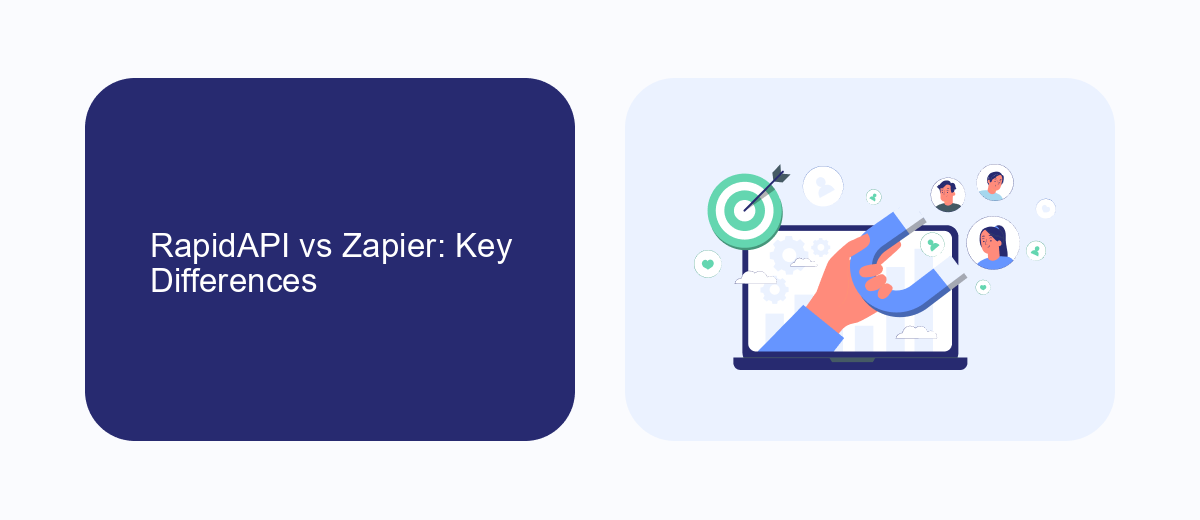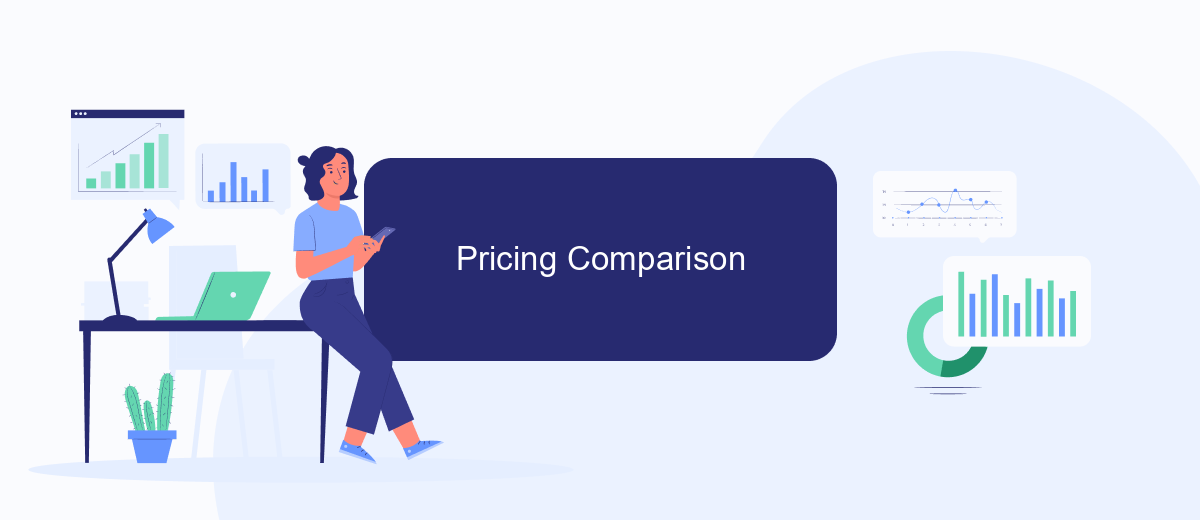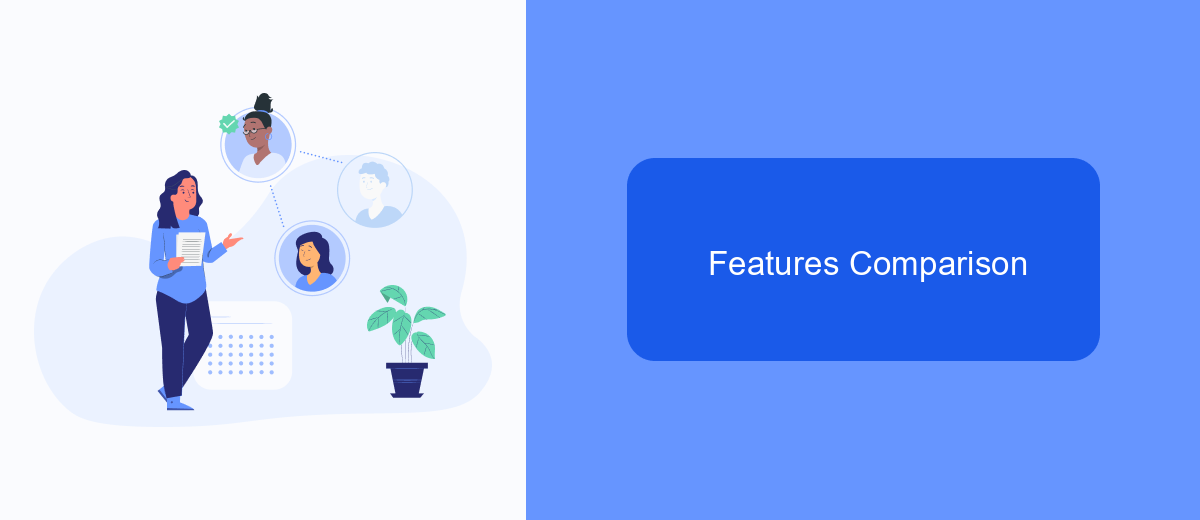In the ever-evolving landscape of automation and API integration, two platforms stand out: RapidAPI and Zapier. Both offer unique capabilities for developers and businesses looking to streamline their workflows and enhance productivity. This article delves into a comparative analysis of RapidAPI and Zapier, examining their features, strengths, and ideal use cases to help you make an informed decision.
Introduction
In today's fast-paced digital landscape, businesses are constantly seeking efficient ways to automate workflows and integrate various applications. RapidAPI and Zapier are two prominent platforms that offer unique solutions for these needs. While RapidAPI focuses on providing a marketplace for APIs, Zapier excels in creating automated workflows between different web applications.
- RapidAPI: A comprehensive platform for discovering, connecting, and managing APIs.
- Zapier: A user-friendly tool for automating tasks by connecting multiple web apps without coding.
- SaveMyLeads: A service that simplifies the integration of leads from various sources into your CRM.
Choosing the right tool depends on your specific requirements. RapidAPI is ideal for developers looking to leverage a wide range of APIs, while Zapier is perfect for non-technical users aiming to streamline their workflows. Additionally, services like SaveMyLeads can further enhance your automation by seamlessly integrating lead data into your CRM, making your business processes even more efficient.
RapidAPI vs Zapier: Key Differences

RapidAPI and Zapier serve distinct purposes in the realm of integrations. RapidAPI is primarily an API marketplace that allows developers to find, connect, and manage APIs from various providers. It offers a centralized platform for API consumption, making it easier for developers to integrate different services into their applications. On the other hand, Zapier is an automation tool designed for non-developers, enabling them to create workflows between different apps without writing any code. By using a simple interface, users can set up "Zaps" to automate tasks such as sending emails, updating spreadsheets, and more.
While RapidAPI caters to developers seeking robust API solutions, Zapier focuses on ease of use for business users looking to streamline their workflows. Additionally, services like SaveMyLeads can complement these platforms by offering pre-built integrations that further simplify the process of connecting various apps. SaveMyLeads provides an intuitive interface to set up automated data transfers between different software, making it a valuable tool for businesses aiming to enhance their automation capabilities without extensive technical knowledge.
Pricing Comparison

When comparing the pricing of RapidAPI and Zapier, it's essential to consider the value each platform offers for their respective costs. Both platforms provide different pricing tiers to cater to various user needs, from individual developers to large enterprises.
- RapidAPI: RapidAPI offers a pay-as-you-go model, with pricing based on API usage. It provides a free tier with limited API calls, and higher tiers that scale with usage, offering more API calls and additional features.
- Zapier: Zapier offers a tiered subscription model, starting with a free plan that includes basic automation features. Paid plans range from Starter to Professional, with increasing levels of tasks, premium apps, and advanced features.
Additionally, for businesses looking to streamline integrations without extensive coding, services like SaveMyLeads can be a cost-effective alternative. SaveMyLeads offers straightforward pricing and aims to simplify the automation process, making it accessible for users who need quick and efficient solutions. Ultimately, the choice between RapidAPI, Zapier, and other tools like SaveMyLeads will depend on your specific integration needs and budget.
Features Comparison

When comparing RapidAPI and Zapier, it's essential to understand the unique features each platform offers. RapidAPI is a marketplace for APIs, providing developers with access to thousands of APIs, while Zapier focuses on enabling automation between different applications without any coding required.
RapidAPI excels in offering a vast array of APIs, giving developers the tools to integrate various functionalities into their applications. Zapier, on the other hand, simplifies the automation process for non-developers by connecting different apps and automating workflows.
- Ease of Use: Zapier offers a user-friendly interface for creating automated workflows, whereas RapidAPI requires some coding knowledge.
- Integration Options: RapidAPI provides access to over 35,000 APIs, while Zapier supports over 3,000 app integrations.
- Target Audience: RapidAPI is more suitable for developers, whereas Zapier caters to both technical and non-technical users.
- Customization: RapidAPI allows for extensive customization through coding, while Zapier offers pre-built templates for quick setup.
For businesses looking for an easy way to set up integrations, services like SaveMyLeads can be a great alternative. SaveMyLeads offers a straightforward solution for automating lead data transfer between various platforms, making it an excellent choice for non-technical users who need efficient and reliable integrations.
Integration Options
When it comes to integration options, both RapidAPI and Zapier offer robust solutions, but they cater to different needs. RapidAPI serves as a marketplace for APIs, allowing developers to discover, test, and connect to thousands of APIs from a single platform. This is particularly useful for developers who need to integrate multiple APIs into their applications, providing a seamless and efficient workflow. RapidAPI also offers tools for monitoring and managing API usage, making it a comprehensive solution for API integration.
On the other hand, Zapier focuses on automating workflows by connecting various web applications without the need for coding. It is designed for non-developers who want to automate repetitive tasks and streamline their processes. With Zapier, users can create "Zaps" that trigger actions between different apps, simplifying complex workflows. Additionally, services like SaveMyLeads can further enhance your integration capabilities by automating lead generation processes and connecting them with your CRM or email marketing tools, providing a more holistic approach to managing your business operations.
FAQ
What is the primary difference between RapidAPI and Zapier?
Can I use both RapidAPI and Zapier for automating tasks?
Do I need programming skills to use RapidAPI and Zapier?
Which platform is better for complex integrations?
Are there alternatives to RapidAPI and Zapier for automation and integrations?
Use the SaveMyLeads service to improve the speed and quality of your Facebook lead processing. You do not need to regularly check the advertising account and download the CSV file. Get leads quickly and in a convenient format. Using the SML online connector, you can set up automatic transfer of leads from Facebook to various services: CRM systems, instant messengers, task managers, email services, etc. Automate the data transfer process, save time and improve customer service.
